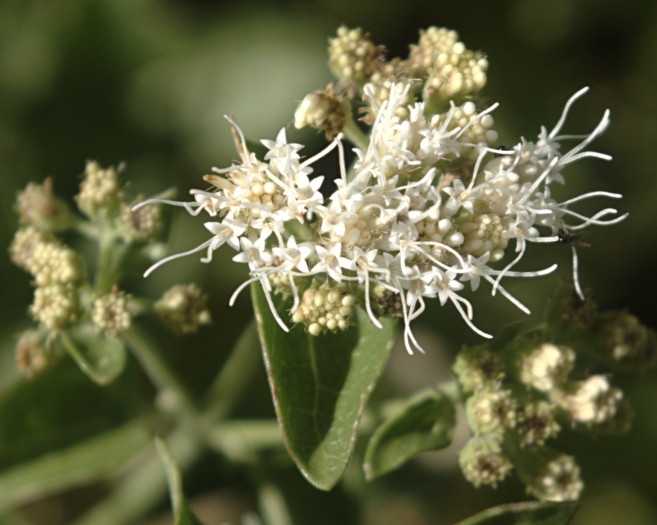Fragrant Snakeroot
(Ageratina herbacea)
Fragrant Snakeroot (Ageratina herbacea)
/
/

JerryFriedman
CC BY-SA 3.0
Image By:
JerryFriedman
Recorded By:
Copyright:
CC BY-SA 3.0
Copyright Notice:
Photo by: JerryFriedman | License Type: CC BY-SA 3.0 | License URL: https://creativecommons.org/licenses/by-sa/3.0 | Uploader: JerryFriedman | Publisher: Wikimedia Commons | Title: Ageratina_herbacea_flora.jpg | Notes: {{Information |Description=Ajuga reptans |Source=Own work |Date=2006-05-09 |Author=Jerzy Opioła |Permission= |other_versions= }} |



































Estimated Native Range
Summary
Ageratina herbacea, commonly known as Fragrant Snakeroot, is an evergreen perennial subshrub or herb native to open woodlands, forest edges, and rocky slopes in the Southwestern United States, particularly in Arizona and New Mexico, and Mexico. It typically grows from a woody caudex to heights between 50 and 70 centimeters with a green, fuzzy stem. The leaves are yellow-green to grayish, triangular to heart-shaped, and have a soft texture. From late summer to fall, it produces clusters of fuzzy flower heads under a centimeter long, each containing long, protruding white disc florets that are quite showy despite the absence of ray florets. The fruit is an achene a few millimeters long, topped with a rough, bristly pappus that aids in wind dispersal.
Fragrant Snakeroot is valued for its aromatic foliage and delicate white flowers that attract pollinators such as butterflies. It is used in native plant gardens, as a border plant, or in naturalized areas where its drought tolerance and adaptability to various soil conditions are beneficial. It thrives in full sun to part shade and requires medium amounts of water, with a preference for well-drained soils. While generally low-maintenance, it can be susceptible to powdery mildew in humid conditions. Gardeners should be aware that, although not aggressive, it can spread through rhizomes and self-seeding, potentially becoming weedy in optimal conditions.CC BY-SA 4.0
Fragrant Snakeroot is valued for its aromatic foliage and delicate white flowers that attract pollinators such as butterflies. It is used in native plant gardens, as a border plant, or in naturalized areas where its drought tolerance and adaptability to various soil conditions are beneficial. It thrives in full sun to part shade and requires medium amounts of water, with a preference for well-drained soils. While generally low-maintenance, it can be susceptible to powdery mildew in humid conditions. Gardeners should be aware that, although not aggressive, it can spread through rhizomes and self-seeding, potentially becoming weedy in optimal conditions.CC BY-SA 4.0
Plant Description
- Plant Type: Subshrub, Herb
- Height: 3-5 feet
- Width: 2-4 feet
- Growth Rate: Moderate
- Flower Color: White
- Flowering Season: Spring, Summer, Fall
- Leaf Retention: Evergreen
Growth Requirements
- Sun: Full Sun, Part Shade
- Water: Medium
- Drainage: Slow, Medium, Fast
Common Uses
Bee Garden, Bird Garden, Low Maintenance, Rock Garden, Showy Flowers
Natural Habitat
native to open woodlands, forest edges, and rocky slopes in the Southwestern United States, particularly in Arizona and New Mexico, and Mexico
Other Names
Common Names: Apache Snakeroot
Scientific Names: , Ageratina herbacea, Eupatorium herbaceum, Eupatorium arizonicum, Eupatorium ageratifolium var. herbaceum, Eupatorium occidentale var. arizonicum, Eupatorium prionobium, Kyrstenia betulifolia, Ageratina betulifolia, Ageratina prionobia
GBIF Accepted Name: Ageratina herbacea (A.Gray) R.King & H.Rob.